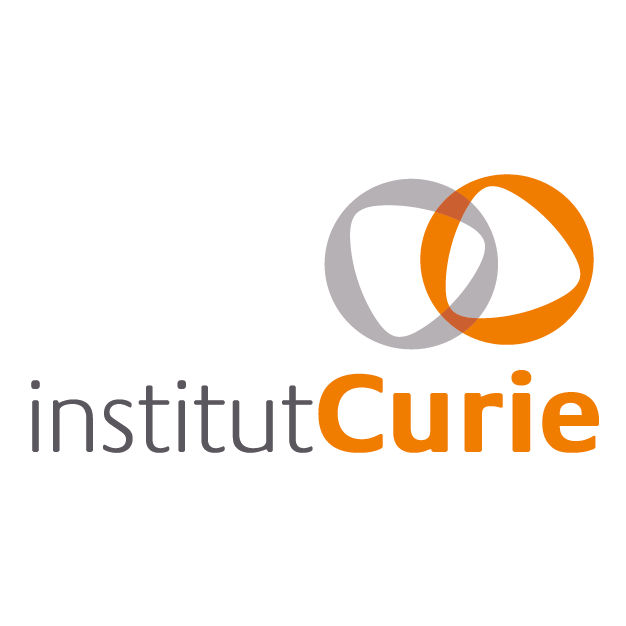预约演示
更新于:2025-09-09
Prolynx LLC
更新于:2025-09-09
概览
标签
肿瘤
皮肤和肌肉骨骼疾病
内分泌与代谢疾病
小分子化药
合成多肽
诊断用放射药物
疾病领域得分
一眼洞穿机构专注的疾病领域
暂无数据
技术平台
公司药物应用最多的技术
暂无数据
靶点
公司最常开发的靶点
暂无数据
| 排名前五的药物类型 | 数量 |
|---|---|
| 合成多肽 | 3 |
| 小分子化药 | 2 |
| 诊断用放射药物 | 2 |
| 核素偶联药物 | 2 |
| 白细胞介素 | 1 |
关联
10
项与 Prolynx LLC 相关的药物靶点 |
作用机制 TOP1抑制剂 |
在研机构 |
原研机构 |
非在研适应症- |
最高研发阶段临床2期 |
首次获批国家/地区- |
首次获批日期- |
靶点- |
作用机制- |
在研机构 |
原研机构 |
非在研适应症- |
最高研发阶段临床1期 |
首次获批国家/地区- |
首次获批日期- |
靶点 |
作用机制 GLP-1R激动剂 |
在研机构 |
原研机构 |
在研适应症 |
非在研适应症- |
最高研发阶段临床1期 |
首次获批国家/地区- |
首次获批日期- |
4
项与 Prolynx LLC 相关的临床试验NCT06894745
Positron Emission Tomography (PET) Imaging of the Enhanced Permeability and Retention (EPR) Effect With [89Zr]DFO-starPEG in Patients With Solid Tumors
This is a first-in-human, pilot study of the novel PET-imaging radiotracer [89Zr]DFO-starPEG. The study is designed to obtain preliminary data to support future development of this agent as an imaging surrogate to visualize enhanced permeability and retention (EPR)-mediated tracer uptake before administration of EPR-based nanomedicines.
开始日期2025-06-02 |
申办/合作机构 |
NCT06337630
A Phase I Study on Tuvusertib (Oral ATR Inhibitor) in Combination With PLX038 (Topo1 Inhibitor) With Dose Expansion Cohorts in Patients With Advanced Solid Tumors
Phase I with a dose finding cohort, followed by expansion cohorts in pre-specified tumor types.
开始日期2025-01-20 |
申办/合作机构  Institut Curie Institut Curie [+2] |
NCT06162351
A Phase II Study to Evaluate the Efficacy and Toxicities of PLX038, in Patients With Locally Advanced or Metastatic Triple-negative Breast Cancer
Single arm phase II study for with primary objective to evaluate the efficacy of PLX038 on response rate for patients with pretreated, metastatic or locally advanced triple negative breast cancer.
开始日期2024-04-17 |
申办/合作机构  Institut Curie Institut Curie [+1] |
100 项与 Prolynx LLC 相关的临床结果
登录后查看更多信息
0 项与 Prolynx LLC 相关的专利(医药)
登录后查看更多信息
3
项与 Prolynx LLC 相关的文献(医药)2015-06-01·European journal of pharmaceutics and biopharmaceutics : official journal of Arbeitsgemeinschaft fur Pharmazeutische Verfahrenstechnik e.V2区 · 医学
Half-life extension of the HIV-fusion inhibitor peptide TRI-1144 using a novel linker technology
2区 · 医学
Article
作者: Ashley, Gary W ; Austin, Nigel E ; Dillen, Lieve ; Santi, Daniel V ; Malcolm, Bruce A ; Stoops, Bart ; Schneider, Eric L
We have previously developed a linker technology for half-life extension of peptides, proteins and small molecule drugs (1). The linkers undergo β-elimination reactions with predictable cleavage rates to release the native drug. Here we utilize this technology for half-life extension of the 38 amino acid HIV-1 fusion inhibitor TRI-1144. Conjugation of TRI-1144 to 40 kDa PEG by an appropriate β-eliminative linker and i.v. administration of the conjugate increased the in vivo half-life of the released peptide from 4 to 34 h in the rat, and the pharmacokinetic parameters were in excellent accord with a one-compartment model. From these data we simulated the pharmacokinetics of the PEG-TRI-1144 conjugate in humans, predicting a t1/2,β of 70 h for the released peptide, and that a serum concentration of 25 nM could be maintained by weekly doses of 8 μmol of the conjugate. Using a non-circulating carrier (2) similar simulations indicated a t1/2,β of 150 h for the peptide released from the conjugate and that dosing of only 1.8 μmol/week could maintain serum concentrations of TRI-1144 above 25 nM. Hence, releasable β-eliminative linkers provide significant half-life extension to TRI-1144 and would be expected to do likewise for related peptides.
JOURNAL OF EXPERIMENTAL & CLINICAL CANCER RESEARCH
Antitumor activity of rucaparib plus PLX038A in serous endometrial carcinoma
Article
作者: Glaser, Gretchen E ; Liu, Yuanhang ; Duffield, Laura N ; Weroha, S John ; Dowdy, Sean C ; Gill, Sarah E ; Peterson, Kevin L ; Butler, Kristina A ; Colon-Otero, Gerardo ; Hou, Xiaonan ; Wang, Chen ; Huang, Yajue ; Fontaine, Shaun D ; Atkinson, Hunter J ; Jessen, Erik ; Xu, Conway ; Larson, Melissa C ; Oberg, Ann L ; Kaufmann, Scott H ; Santi, Daniel V ; Bakkum-Gamez, Jamie N ; Zanfagnin, Valentina
Abstract:
Background:
Serous endometrial cancer (SEC) is a genomically and morphologically distinct endometrial cancer (EC) subtype with a poor progression-free and overall survival. The development of novel therapies is needed to improve outcomes.
Methods:
We used serous and serous-like EC patient-derived xenografts (PDXs) to test a novel drug combination in vitro and in vivo: rucaparib and pegylated SN-38 (PLX038A). Sensitivity to treatment was correlated with indicators of homologous recombination (HR) deficiency. Efficacy in fresh primary patient tumors was also tested ex vivo.
Results:
Five of eight PDXs had genomic instability scores ≥ 42, but only one of these five had evidence of HR deficiency in assays of irradiation-induced RAD51 foci formation. Moreover, PARP inhibitor (PARPi) monotherapy failed to induce regressions in any of the five SEC models treated with rucaparib in vivo, suggesting limited clinical activity of PARPi in SEC. In further studies, we assessed the response of these models to the sustained release topoisomerase 1 inhibitor, PLX038A, as monotherapy and in combination with rucaparib ex vivo and in vivo. Results of these studies showed that PLX038A had limited monotherapy activity, but combination therapy induced significant regressions in two of five SEC PDXs and markedly slowed tumor growth in the other three regardless of underlying homologous recombination repair deficiency. In addition, 11 of 20 (55%) primary tumors showed synergy with rucaparib + SN-38.
Conclusions:
Collectively, these studies identify a set of genomically characterized PDX models for preclinical testing of potential SEC therapies and a therapeutic combination that warrants further preclinical investigation.
Scientific reports3区 · 综合性期刊
Probing the luminal microenvironment of reconstituted epithelial microtissues
3区 · 综合性期刊
ArticleOA
作者: Desai, Tejal A ; Samy, Karen E ; Henise, Jeff ; Todhunter, Michael E ; Schlesinger, Erica ; Gartner, Zev J ; Cerchiari, Alec E ; Rieken, Christopher
Abstract:
Polymeric microparticles can serve as carriers or sensors to instruct or characterize tissue biology. However, incorporating microparticles into tissues for in vitro assays remains a challenge. We exploit three-dimensional cell-patterning technologies and directed epithelial self-organization to deliver microparticles to the lumen of reconstituted human intestinal microtissues. We also develop a novel pH-sensitive microsensor that can measure the luminal pH of reconstituted epithelial microtissues. These studies offer a novel approach for investigating luminal microenvironments and drug-delivery across epithelial barriers.
9
项与 Prolynx LLC 相关的新闻(医药)2024-12-02
Single injection of ProLynx long-acting semaglutide produced 20% weight loss in diet-induced obese mice, which is comparable to multiple semaglutide injections over the same period
SAN FRANCISCO, Dec. 2, 2024 /PRNewswire/ -- ProLynx Inc., a biotechnology company developing proprietary systems to extend the half-life, improve efficacy, and reduce toxicities of important therapies, today announced that research of the company's proprietary, once monthly semaglutide technology was published in the Proceedings of the National Academy of Sciences (PNAS 2024 Vol. 121 No. 47). Semaglutide is a peptide GLP-1 agonist that is the active ingredient in the Novo Nordisk blockbuster anti-obesity drugs Ozempic® and Wegovy®.
The paper, titled "The limitation of lipidation: Conversion of semaglutide from once-weekly to once-monthly dosing," demonstrated the ability of the ProLynx ß-Eliminative Drug Delivery System to extend the half-life of semaglutide to 35 days, enabling a once monthly administration of the drug. As with most anti-obesity peptides, current versions of semaglutide must be administered once weekly. Importantly, a single injection of the ProLynx long-acting semaglutide in diet-induced obese mice produced weight loss of 20% over one month, which is comparable to multiple injections of semaglutide over the same period. Simulations indicated the ProLynx semaglutide would permit once-monthly administration in humans.
Daniel Santi, M.D., Ph.D., co-founder and President of ProLynx, stated: "Our long-acting semaglutide is compelling because it uses the very same agent that is already approved by the FDA and well-known to patients. The ProLynx technology simply converts the once weekly drug to one that can be administered once monthly."
ProLynx's novel, proprietary technology is designed to extend the half-life and lower the Cmax of peptide, protein and small molecule drugs. Underpinning the technology, ProLynx developed a library of "self-cleaving" β-eliminative linkers that are programmed by a specific "modulator" to release a native, unmodified drug from a carrier over designated periods of weeks to months. The drug is then tethered to a long-lived carrier by one of these linkers and administered subcutaneously at designated dosing intervals.
Dr. Santi added, "Our company is differentiated by our ability to create long-acting therapeutics. In the rapidly evolving landscape of anti-obesity peptides, the current technological standard is once-weekly administration, with some companies pioneering efforts to extend this to a monthly regimen. At ProLynx, we are advancing this frontier by initially starting with once-monthly dosing, with plans to further increase dosing intervals as we progress."
About ProLynx
ProLynx is a biotechnology company developing proprietary systems to extend the half-life and improve pharmacokinetics and efficacy, while reducing toxicities of important therapies. ProLynx focuses on areas of unmet needs that its technology can uniquely fill. For more information, visit .
Media Contact:
Tiberend Strategic Advisors, Inc.
Casey McDonald
[email protected]
ProLynx BD Contact:
[email protected]
SOURCE ProLynx, Inc.
WANT YOUR COMPANY'S NEWS FEATURED ON PRNEWSWIRE.COM?
440k+
Newsrooms &
Influencers
9k+
Digital Media
Outlets
270k+
Journalists
Opted In
GET STARTED

临床结果
2024-08-23
Aug. 21, 2024 -- ProLynx Inc. today announced the use of their technology to create a long-acting semaglutide that can be administered once monthly. The ProLynx technology involves tethering a therapeutic to hydrogel microspheres via linkers with tunable, pre-programmed release rates. Semaglutide is a peptide GLP-1 agonist that is the active ingredient in the Novo Nordisk blockbuster drugs Ozempic® and Wegovy®; Ozempic® is used to treat Type 2 diabetes, whereas Wegovy® is a higher-dose version approved for weight loss. Combined sales of these drugs reached about $20 billion in 2023, and demand exceeded supply. Semaglutide has a half-life of about 160 hours and, as with most anti-obesity peptides, must be administered once weekly.
All peptide drugs have short half-lives and require some form of half-life extension. Almost all of the current anti-obesity drugs, including semaglutide, are "lipidated" peptides – attached to a fatty acid – that require once weekly injections. The ProLynx long-acting semaglutide was targeted for once monthly administration, and pharmacokinetic experiments verified an extended half-life of about 30 days in mice. Importantly, a single injection in diet-induced obese mice showed about a 20% weight loss after 30 days, comparable to multiple injections of semaglutide over the same period.
Daniel Santi, co-founder and President of ProLynx, stated, “Our long-acting semaglutide is compelling because it uses the very same semaglutide that is already approved by the FDA and well-known to patients. The technology simply converts the once weekly drug to one that can be administered once monthly. Previously, ProLynx developed a long-acting monthly peptide GLP-1 agonist as an agent for the treatment of type-2 diabetes (Schneider et al., ACS Chem. Biol. 2017), but this is the first time we achieved this with a lipidated peptide.”
Using the same approach, ProLynx envisions converting other lipidated peptides of high current interest from once weekly to once monthly administration. Additionally, simulations indicate that the long half-lives and high potencies of some GLP-1 agonists might allow for dosing every three or more months. This could be particularly important in certain patient populations because dosing could coincide with doctor’s visits.
ProLynx is a San Francisco biotechnology company developing proprietary systems to extend the half-life and improve pharmacokinetics and efficacy, while reducing toxicities of important therapies. ProLynx focuses efforts on areas of unmet needs that its technology can uniquely fill (www.ProLynxinc.com). Contact: BD@ProLynxinc.com
The content above comes from the network. if any infringement, please contact us to modify.

上市批准
2024-03-25
SAN FRANCISCO, March 25, 2024 (GLOBE NEWSWIRE) -- ProLynx Inc. announced that the first patient was included in TOPOLOGY by investigator Dr. Delphine Loirat, with a Phase II clinical trial investigating PLX038 (PEG~SN-38) for locally-advanced or metastatic triple-negative breast cancer (TNBC). Patients will have been previously treated with at least two therapies, including the antibody-drug conjugate (ADC) sacituzumab govitecan (SG; Trodelvy). The TOPOLOGY trial is run by Institut Curie (Paris and Saint Cloud, France), with principal investigator Prof. Francois-Clement Bidard .
PLX038 is a long-acting prodrug of the topoisomerase 1 (Top1) inhibitor, SN-38, which is also the active component of anti-cancer agents irinotecan and the ADC SC. Top1 inhibitors cause DNA breaks and kill tumors that are unable to repair the damage. Previously, Curie researchers showed that about one-third of TNBC patients have defects in DNA damage repair, and should respond to an effective SN-38-based therapy (Coussy et al., 2020). In PLX038, SN-38 is covalently bound to a circulating nanoparticle and is slowly released to provide free SN-38 with a long half-life, low Cmax, and high exposure – important facets for optimal safety and efficacy. Importantly, in preclinical studies PLX038 was shown to accumulate and be retained in solid tumors, where it slowly releases its SN-38.
SG is an anti-TROP2 ADC with an SN-38 payload that was recently approved for use in advanced TNBC. However, the rapid spontaneous linker hydrolysis in SG releases a large amount of SN-38 cargo systemically, which may in part contribute to its efficacy and also in part be responsible for systemic side effects. Unfortunately, the median progression-free survival after SG therapy is only ~6 months due to resistance, and there are limited rescue therapies available.
ProLynx co-founder and President Daniel V. Santi commented, “Although the active SN-38 payload of PLX038 and SG is the same, the anti-tumor mechanisms of the prodrugs are quite different; and, some mechanisms of resistance may also quite be different (Santi et al., Biodrugs,2024). Taken together, it is reasonable to believe that PLX038 may be effective in SG-resistant tumors.”
Curie investigator Francois-Clement Bidard added, “As with our earlier preclinical study of the correlation of efficacy of irinotecan with BRCAness and SFLN11 biomarkers, TOPOLOGY will assess association of PLX038 efficacy with homologous recombination defects, and biomarkers such as SFLN11 expression and RB1 loss. If confirmed in TOPOLOGY, these biomarkers will allow pre-selection of patients most likely to respond to the drug.”
ProLynx is a San Francisco biotechnology company developing proprietary systems to improve the pharmacokinetics and efficacy of important therapies ( ).
Institut Curie, France’s leading cancer center, combines a renowned research center and hospital which treats all types of cancer. Institut Curie has 3 sites (Paris, Saint-Cloud and Orsay) with over 3,700 health professionals working on treatment, research and teaching ( ) Information on this clinical trial is available at clinicaltrials.gov, NCT06162351.
Contact
BD@ProLyninc.com
临床2期抗体药物偶联物
100 项与 Prolynx LLC 相关的药物交易
登录后查看更多信息
100 项与 Prolynx LLC 相关的转化医学
登录后查看更多信息
组织架构
使用我们的机构树数据加速您的研究。
登录
或

管线布局
2025年12月31日管线快照
管线布局中药物为当前组织机构及其子机构作为药物机构进行统计,早期临床1期并入临床1期,临床1/2期并入临床2期,临床2/3期并入临床3期
临床前
7
2
临床1期
临床2期
1
登录后查看更多信息
当前项目
| 药物(靶点) | 适应症 | 全球最高研发状态 |
|---|---|---|
DFP-13318 ( Top I ) | 晚期恶性实体瘤 更多 | 临床1期 |
[89Zr]DFO-starPEG | 软组织挫伤 更多 | 临床1期 |
Gln28Exenatide(Prolynx LLC) ( GLP-1R ) | 2型糖尿病 更多 | 临床1期 |
PLX0376 ( PARP ) | 实体瘤 更多 | 临床前 |
177Lu-DOTA-StarPEG-ACUPA3 | 前列腺癌 更多 | 临床前 |
登录后查看更多信息
药物交易
使用我们的药物交易数据加速您的研究。
登录
或

转化医学
使用我们的转化医学数据加速您的研究。
登录
或

营收
使用 Synapse 探索超过 36 万个组织的财务状况。
登录
或

科研基金(NIH)
访问超过 200 万项资助和基金信息,以提升您的研究之旅。
登录
或

投资
深入了解从初创企业到成熟企业的最新公司投资动态。
登录
或

融资
发掘融资趋势以验证和推进您的投资机会。
登录
或

生物医药百科问答
全新生物医药AI Agent 覆盖科研全链路,让突破性发现快人一步
立即开始免费试用!
智慧芽新药情报库是智慧芽专为生命科学人士构建的基于AI的创新药情报平台,助您全方位提升您的研发与决策效率。
立即开始数据试用!
智慧芽新药库数据也通过智慧芽数据服务平台,以API或者数据包形式对外开放,助您更加充分利用智慧芽新药情报信息。
生物序列数据库
生物药研发创新
免费使用
化学结构数据库
小分子化药研发创新
免费使用
